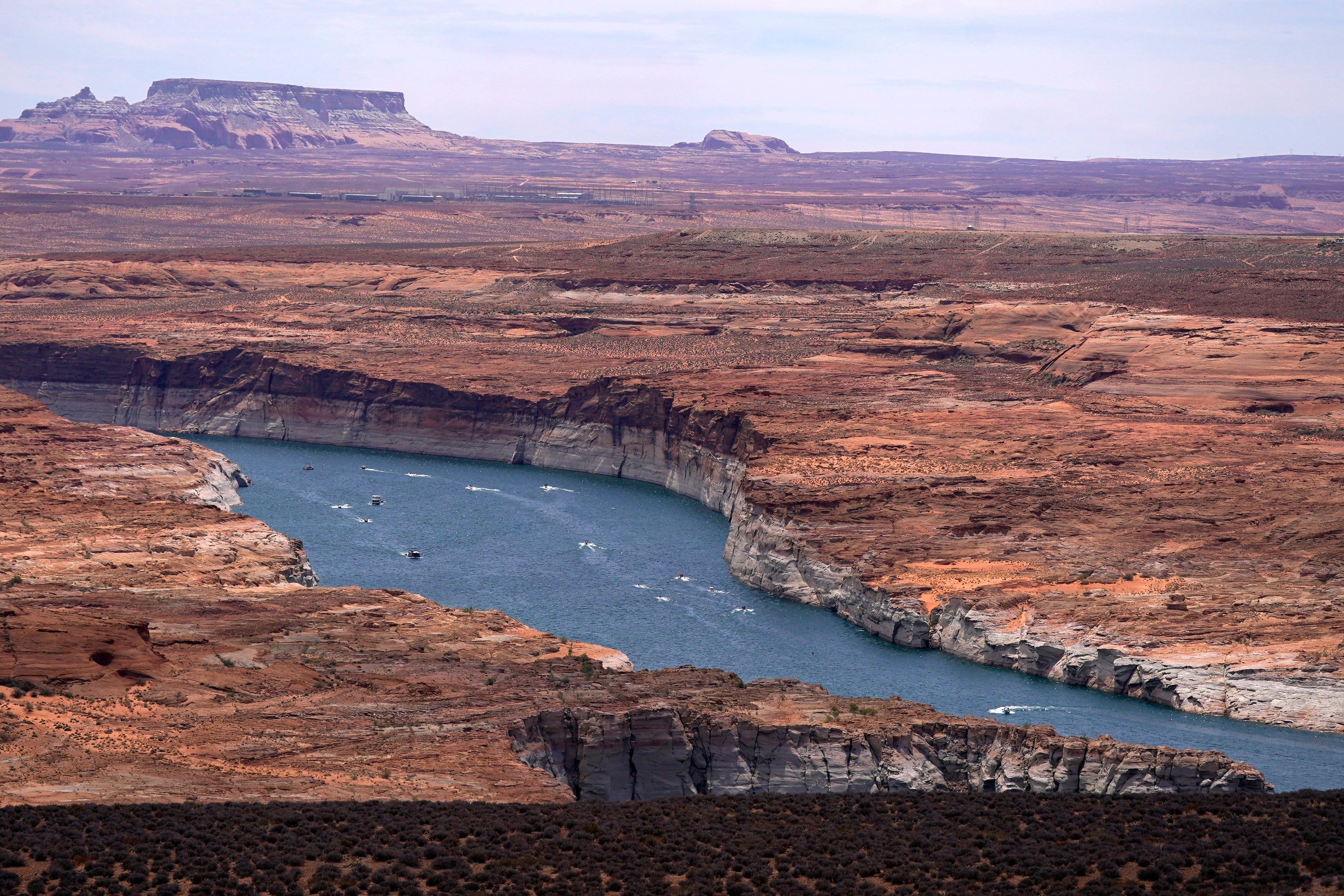US taps $420M to boost water supplies hit by climate change
Federal officials are funneling more money to rural water projects in several states as the Biden administration looks to put a dent in growing infrastructure needs amid drought and climate change

Federal officials slated millions of dollars for rural water projects in several states, with the Biden administration looking to shore up infrastructure needs made more urgent by long-term drought conditions that have been exacerbated by climate change.
The U.S. Interior Department announced Thursday that $420 million will be spent on projects in New Mexico, Minnesota, Montana, North Dakota, South Dakota and Iowa. The work includes construction of water treatment plants, pipeline connections, pump systems and reservoirs to provide drinking water to rural and tribal communities.
The West is experiencing a more than 20-year megadrought. Scientists say the region has become much warmer and drier in recent decades and that climate change will continue to make weather more extreme, wildfires more frequent and destructive, and water supplies less reliable.
From Idaho and Montana south to New Mexico and Arizona, even soil moisture levels have hit record lows as major reservoirs along the Colorado River have plummeted. Earlier this month, Lake Powell hit a record low, spurring concerns about the ability to crank out more hydropower from the dam that holds it back.
Native American tribes that are finally seeing federal money after years of being underfunded are working to get at water they long had rights to but could not access without funds to build the infrastructure. On the Navajo Nation, tens of thousands of people still live without running water, while tribes in the upper Midwest are awaiting pipeline extensions that would tap into reliable sources.
In all, the infrastructure measure included $5 billion for Western water programs, with 20% of that dedicated to rural projects.
Federal officials said the allocations were based on project plans and significant goals that are projected to be reached with the funding.
The largest share — $160 million — will go toward a project decades in the making that will eventually provide water for about 70,000 people who live in communities along the New Mexico-Texas state line, where the Ogallala aquifer is being pumped at a faster rate than it's being replenished.
The Eastern New Mexico Water Utility Authority will receive additional money from the Bureau of Reclamation and the state of New Mexico. When combined with matching money from the utility, the total for this year will be more than $228 million.
“This will take us far in the construction of this critically important project,” said Michael Morris, chairman of the water authority and mayor of Clovis, a rural community in eastern New Mexico.
Other allocations include $75.5 million for the Lewis & Clark Rural Water System, which spans parts of South Dakota, Iowa and Minnesota. The system is designed to pipe water from the Missouri River to areas as far as 60 miles (97 kilometers) away that have less plentiful resources.
In North Dakota, $51 million will go to a section of the Pick-Sloan Missouri Basin Program.
More than $57 million will go to the Rocky Boys/North Central Montana Rural Water System, which serves the Rocky Boy’s Reservation and numerous municipalities. The Fort Peck Reservation in Montana will benefit from $7 million for the water system there.
Tanya Trujillo, assistant Interior secretary for water and science, was flanked by water managers in Albuquerque when she made the announcement.
“The department is committed to bringing clean, reliable drinking water to rural communities to help strengthen resilience to climate change,” Trujillo said.